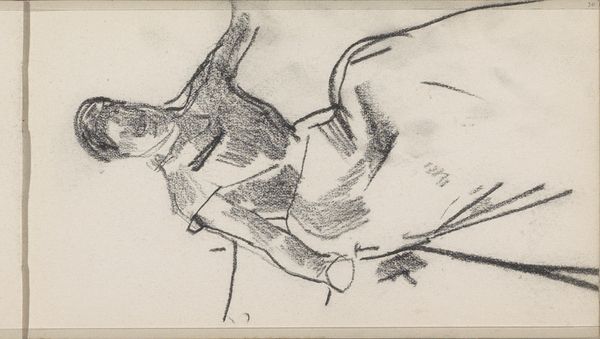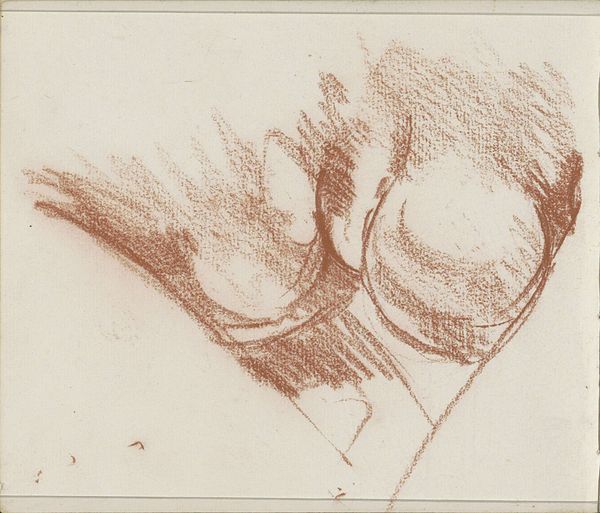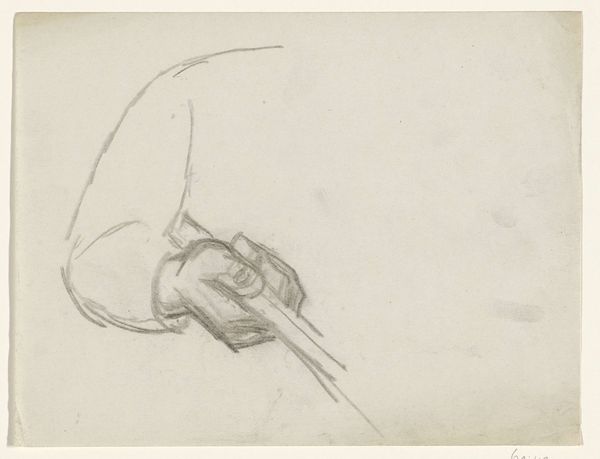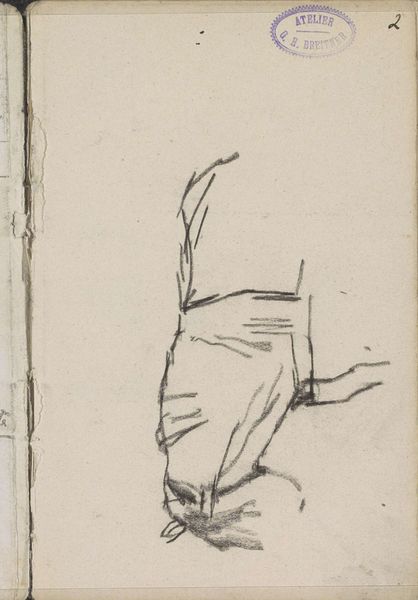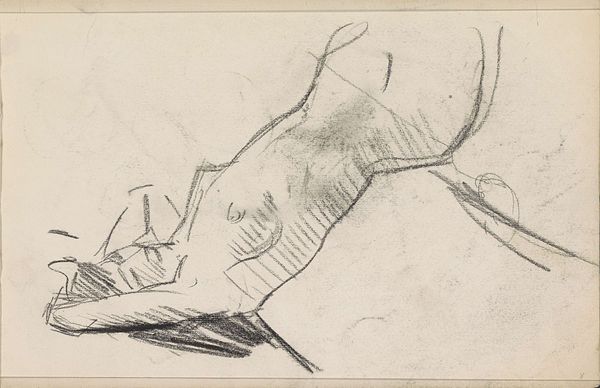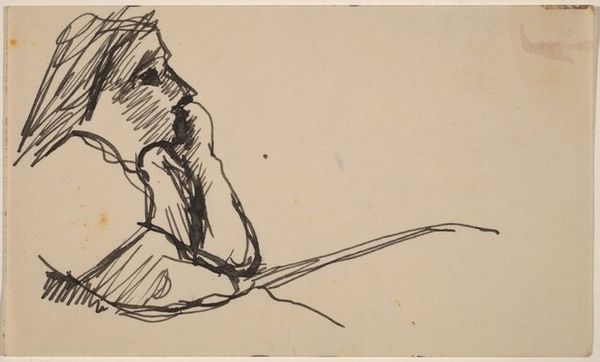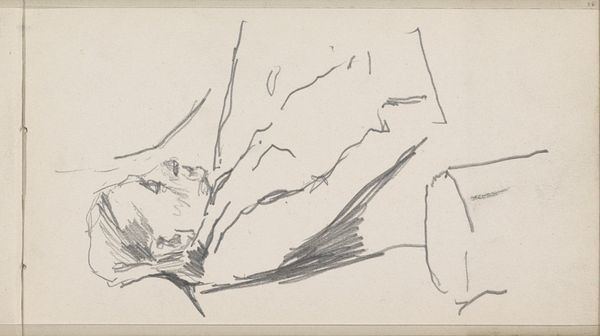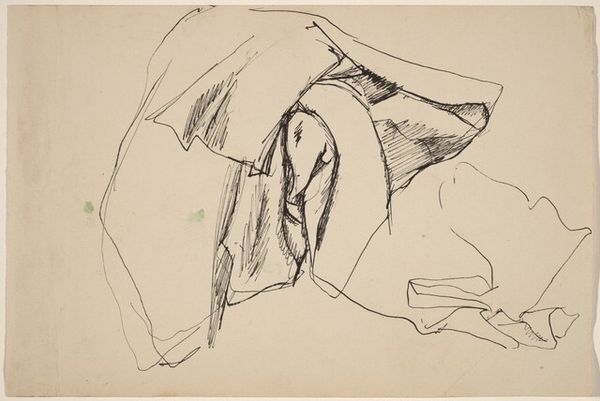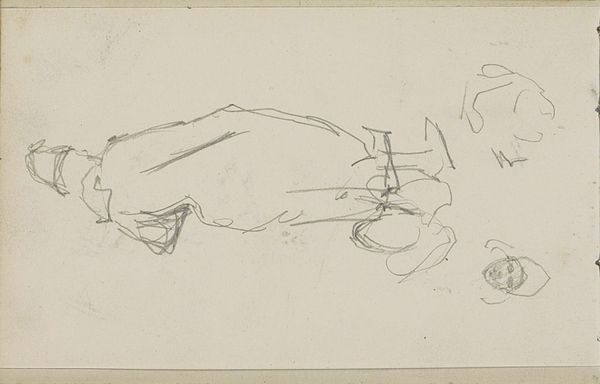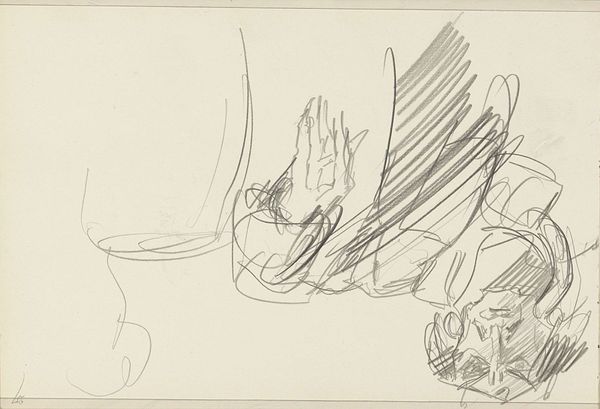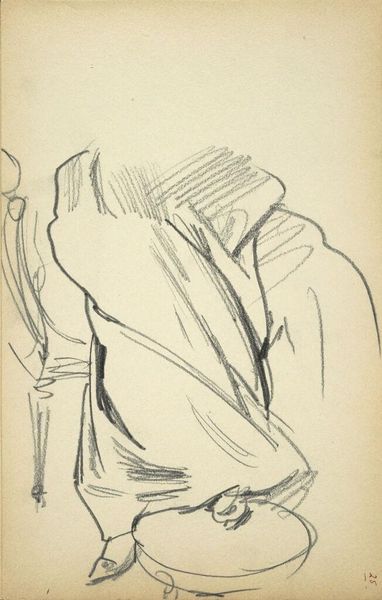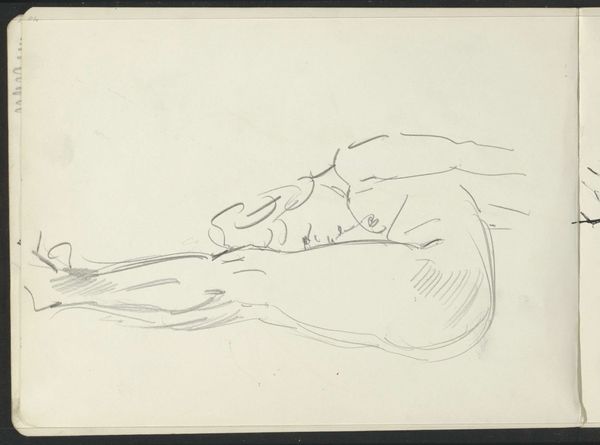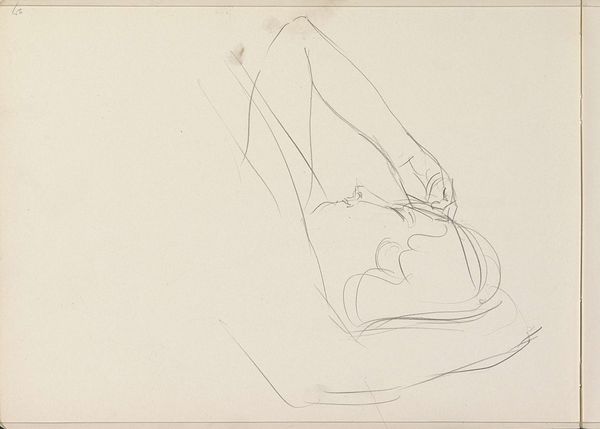
drawing, pencil, graphite
#
drawing
#
pencil sketch
#
form
#
pencil
#
line
#
graphite
Copyright: Rijks Museum: Open Domain
Editor: This is "Linkermouw van een jas," or "Left Sleeve of a Jacket," a pencil drawing created sometime between 1865 and 1913, currently housed in the Rijksmuseum. The quick, sketchy lines give it a very casual, almost fleeting feel. What do you see in this piece? Curator: Primarily, I see a study in form and line. Note how Hubrecht uses varied line weights to delineate the contours of the sleeve, achieving a remarkable sense of volume and depth with minimal shading. Consider, too, the suggestive nature of the composition. The sleeve isn't contextualized within a complete figure; instead, it exists as an isolated element, drawing our attention to the abstract qualities of shape and texture. Editor: It almost feels unfinished, like a preliminary sketch. Curator: Precisely. The "unfinished" quality is essential. The exposed, tentative lines reveal the artist’s process, inviting the viewer to consider the construction of form itself. The artist seems more interested in exploring the inherent characteristics of line and shading than in the jacket’s utilitarian purpose. Is this observation fair? Editor: That makes sense. I was so focused on it being a sleeve that I didn't notice how abstract it actually is. Now I see how the artist is prioritizing the play of light and shadow. Curator: Exactly. Forget the object; consider instead how line and form converge to create an illusion of three-dimensionality on a flat surface. Notice how the weave is built out of these single strands into something robust. This emphasis transcends the mere representation. Editor: So, by isolating this sleeve, Hubrecht compels us to appreciate the fundamentals of artistic construction? Curator: Indeed. It’s an essay on form. Editor: This was insightful. I'm so used to thinking about context. It's great to have my eyes tuned to the underlying structure of the artwork. Curator: It is also important to notice that, beyond what's been represented, the choices the artist makes determine what ultimately comes into view.
Comments
No comments
Be the first to comment and join the conversation on the ultimate creative platform.

